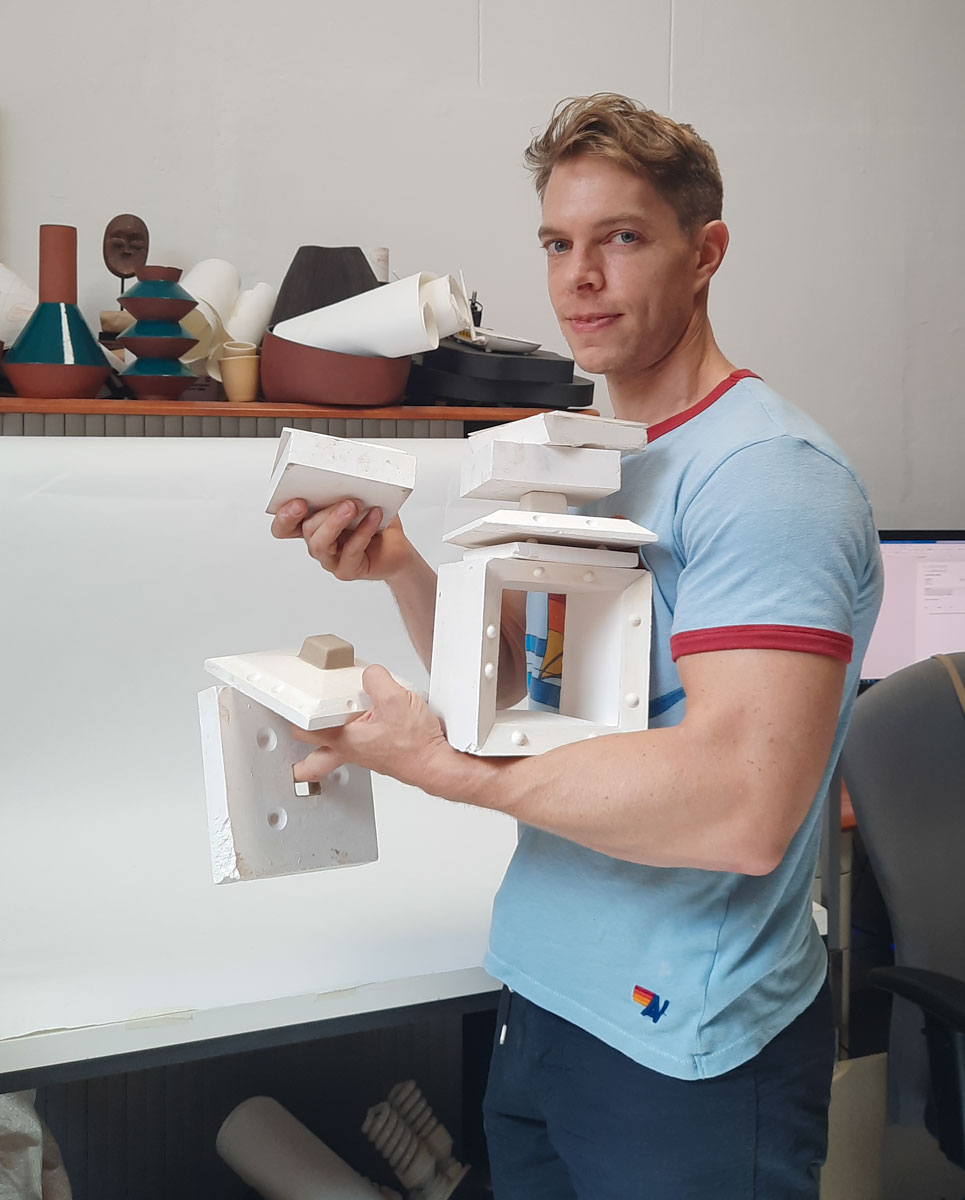
The gap between idea and execution
So, tra-la-la, it’s all “clever me” when the facade of Fortuna apartments on the Sea Point Promenade gives me an idea… but what happens next? How does a sketch on paper actually turn into a vase? One that stacks?
The fact is, there’s a MASSIVE gap between an idea, and the idea becoming something for realz. And that gap? It’s bridged by stacking it high with failed experiments, months of planning, and hours of slog.
My little sketched idea for a vase that stacks together turned into a year of puzzling and frustration for engineer-turned-ceramicist, Colin Braye of Vorster + Braye. We talked through his process in this interview:
Interview with Colin Braye
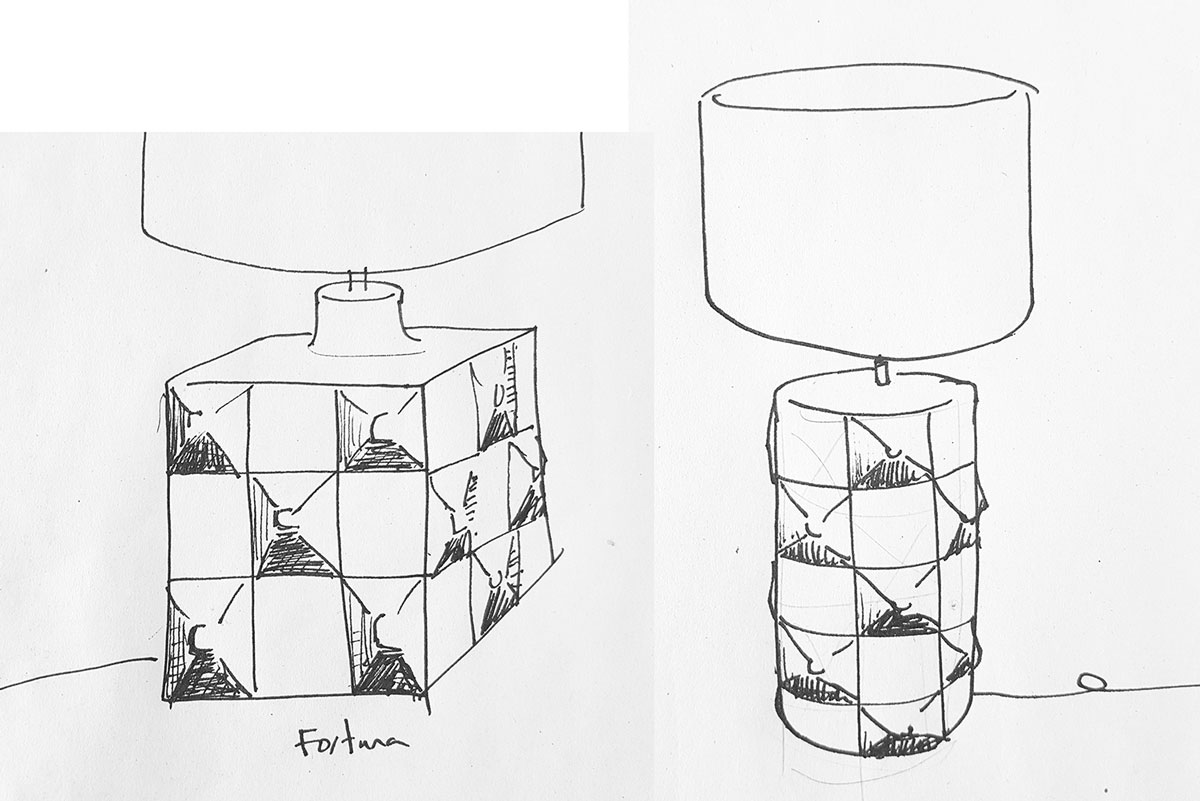
Heather Moore: I was keen to create something 3D, inspired by the faceted facade of Fortuna apartments on the Sea Point Promenade. My first idea was to create a Fortuna lampbase (above), but you had reservations about that. Remind me why?
Colin Braye: It was about the interface between the hard bits and the wobbly bits – the elecrical components and the clay, and the challenges of designing those to fit together. Little did I know that the next idea you brought me would be a MUCH more difficult project.
Heather: Ha ha. Sorry about that! Tell me more about the challenges you faced when figuring out how to make my stacking vase idea.
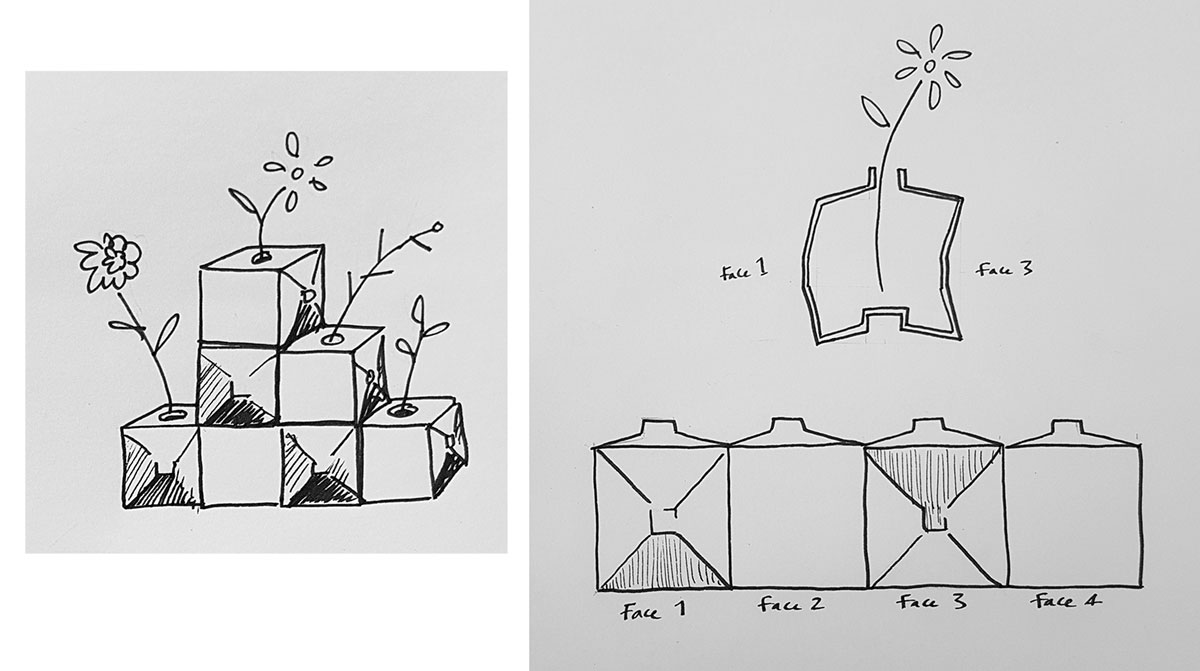
Colin: Well, it looked like an interesting challenge. All those straight lines and sharp corners had to fit perfectly in order to stack together.
But while lines and angles appeal to the engineer in me, clay is a bit fuzzier and requires a more intuitive route to the solution.
My first challenge was to make the two faceted surfaces that could nest into one another. I started by trying to make plaster molds of the shape made with card and sellotape, but ended up carving the shapes entirely by hand, making tiny adjustments along the way.
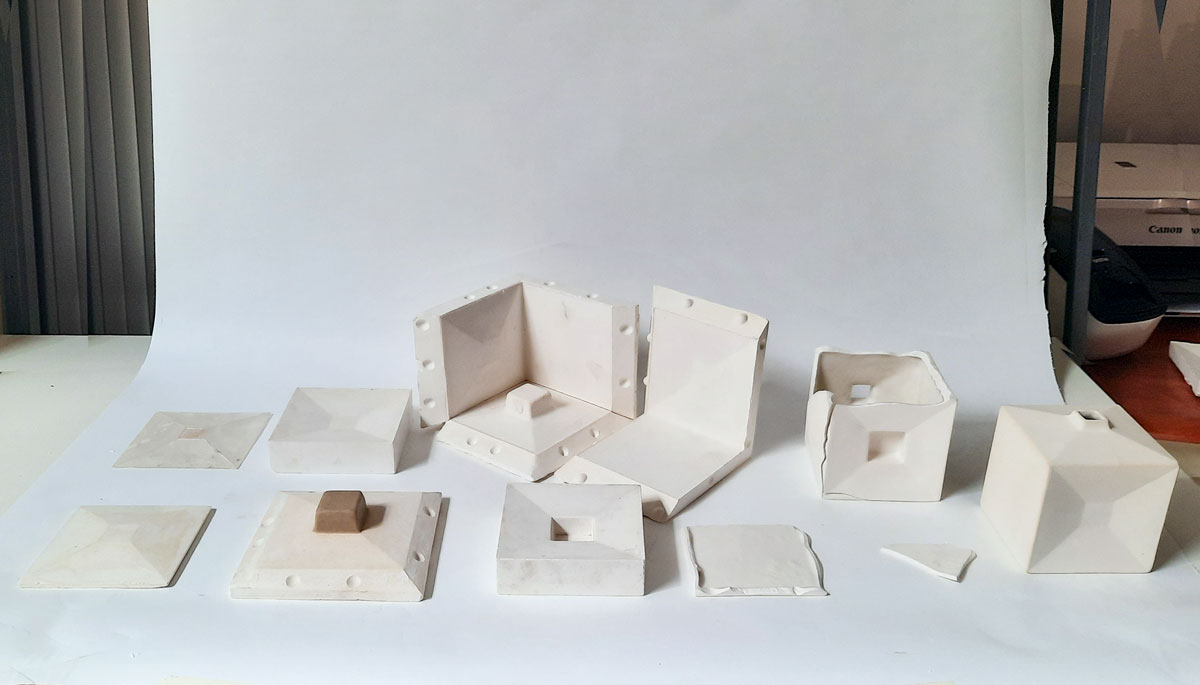
Then, once my test mold was made, I experimented with using both porcelain and paper clay. Both of them were a struggle – I really battled to get them to release from the mold. Eventually, I got the results I needed with white stoneware and could move forward.
I created a new mold and cast a few vases in stoneware, but when it came to glazing the interior, the tension in the glaze pulled on the corner stress points, causing the vase to crack catastrophically.
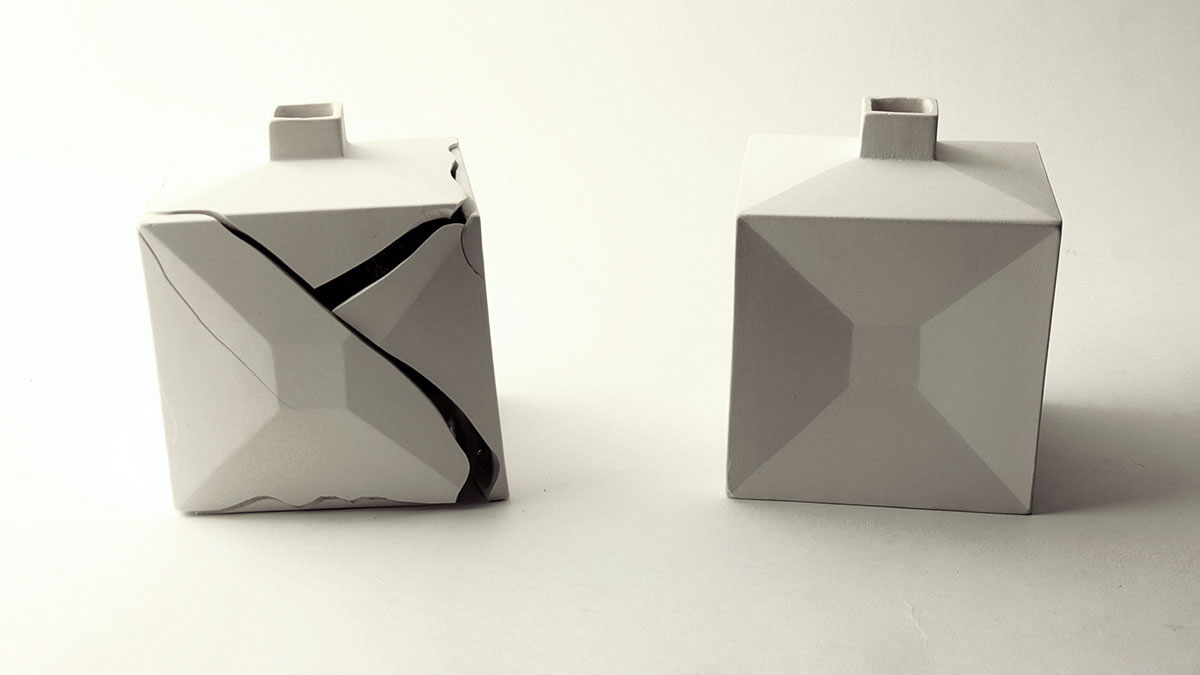
At this point I had to make another mold that would address these points of tension in the design. Then I cast, glazed fired a few, and eventually I had managed to perfected the product which meant we could go into production.
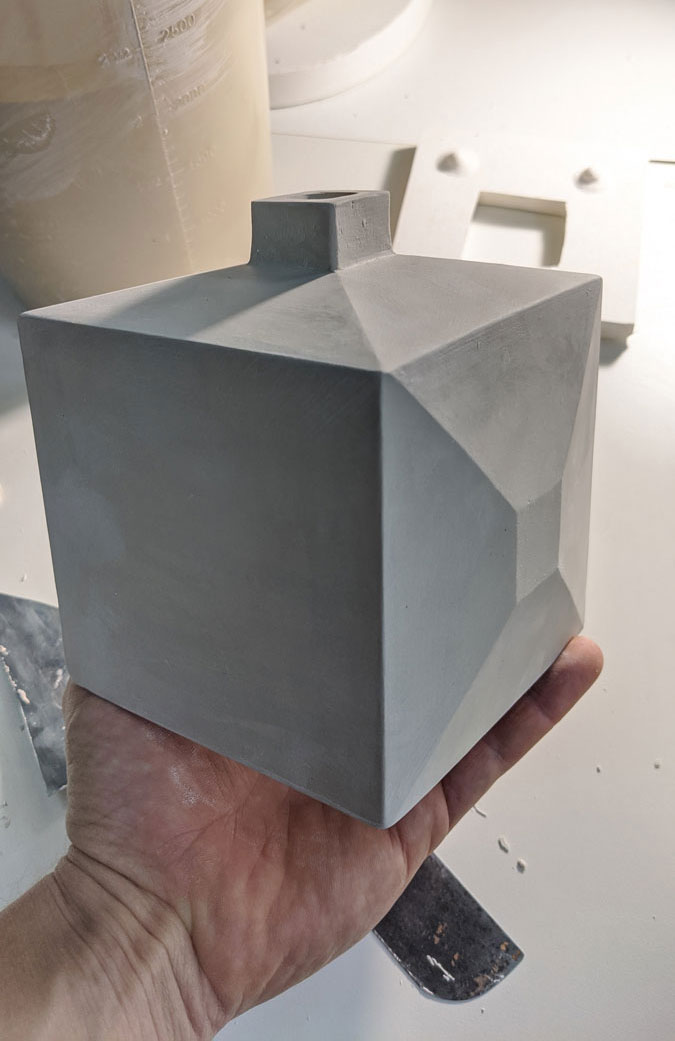
Heather: Wow, so that was all happening just to get to a viable prototype. I’m wondering what kept you going over a course of a year, chipping away to find a solution?
Colin: I love a challenge, and it’s satisfying to figure out the problems and tick them off on the way: “Oh, this happened because the corners are too sharp. This happened because the glaze was too thick, the clay wasn’t dense enough”
Also, I think that working in collaboration helps. I didn’t want to let the team down, so I kept going. When you explore something with someone, the shared investment in the crazy idea keeps it alive, whereas if it was just my own crazy idea, I may well have quit much earlier in the process.
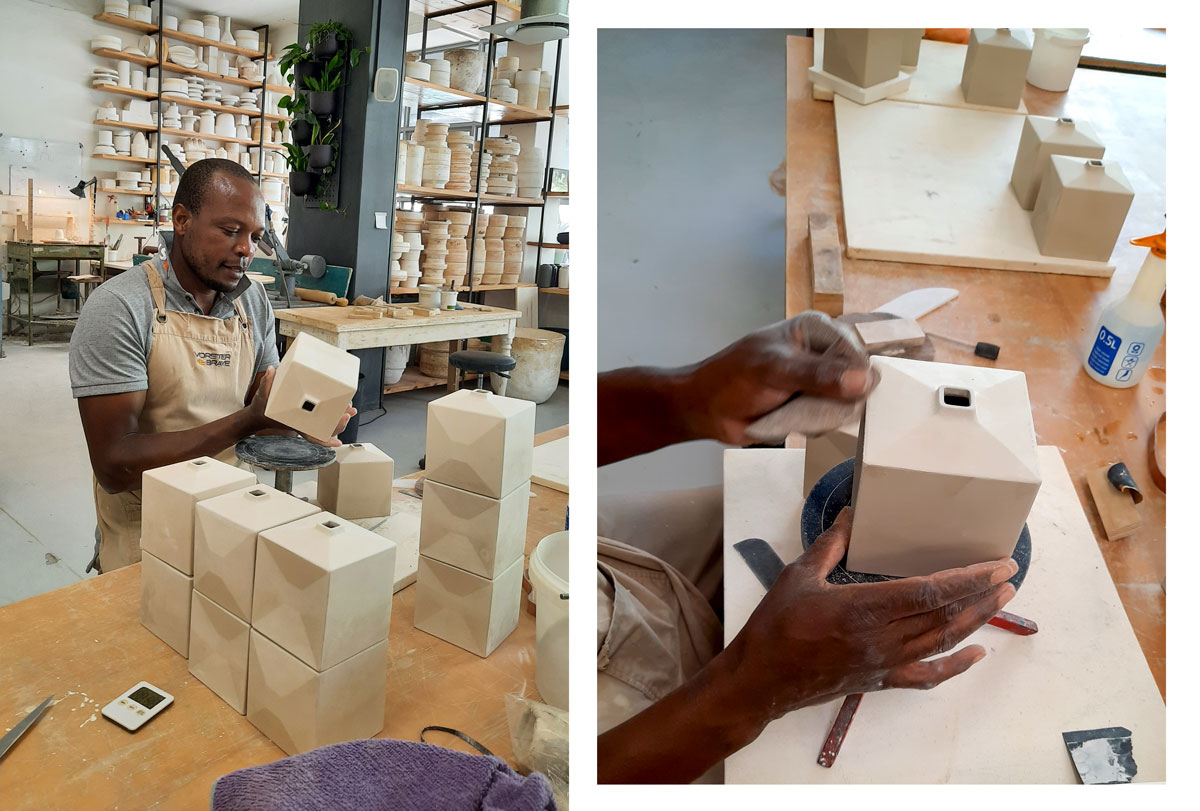
Heather: And talking of completion, once you’d perfected the design, what are the next steps?
Colin: Well, after all the R&D was complete, we made a production mold that allows me and my team to cast multiple vases for bisque firing. Once bisqued, we clean up each vase, sanding off rough edges before the inside is glazed and it goes into the kiln for a final firing. And firing can, of course, be unpredictable.
Heather: This is making fabric design and production look like an walk in the park. Ceramicists are AWESOME! I hope that people who read this will find their own experience of objects enriched by knowing everything that went into turning an idea into an object.
Thank you for all the work you’ve put into taking my little idea and turning it into something beautiful and useful for people to enjoy.
Follow Vorster and Braye on Instagram to see what else Colin and his team are up to.
